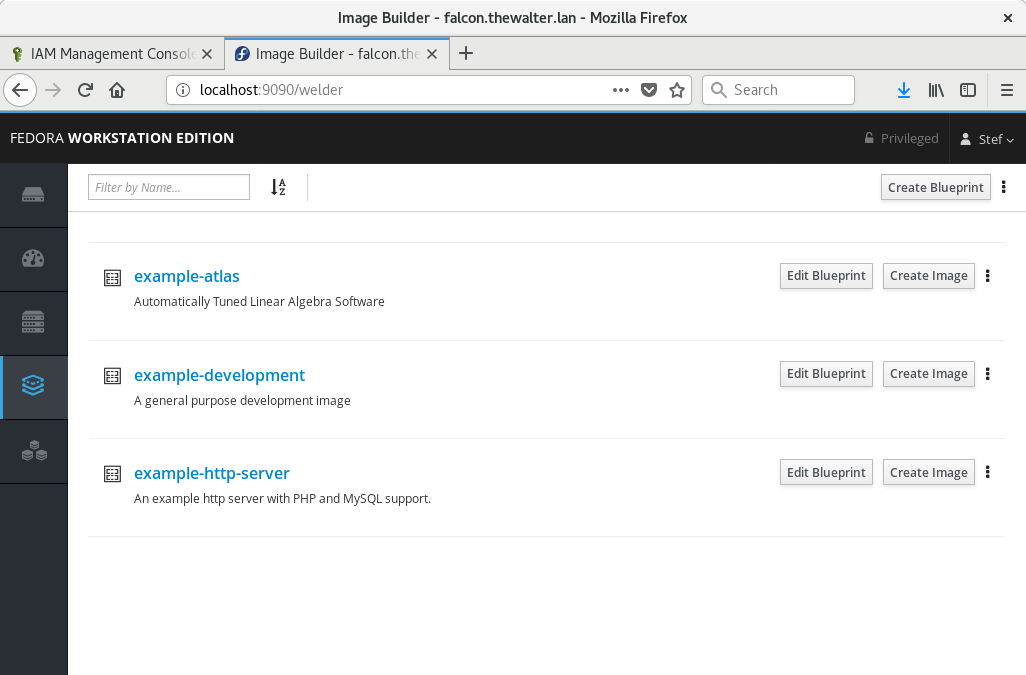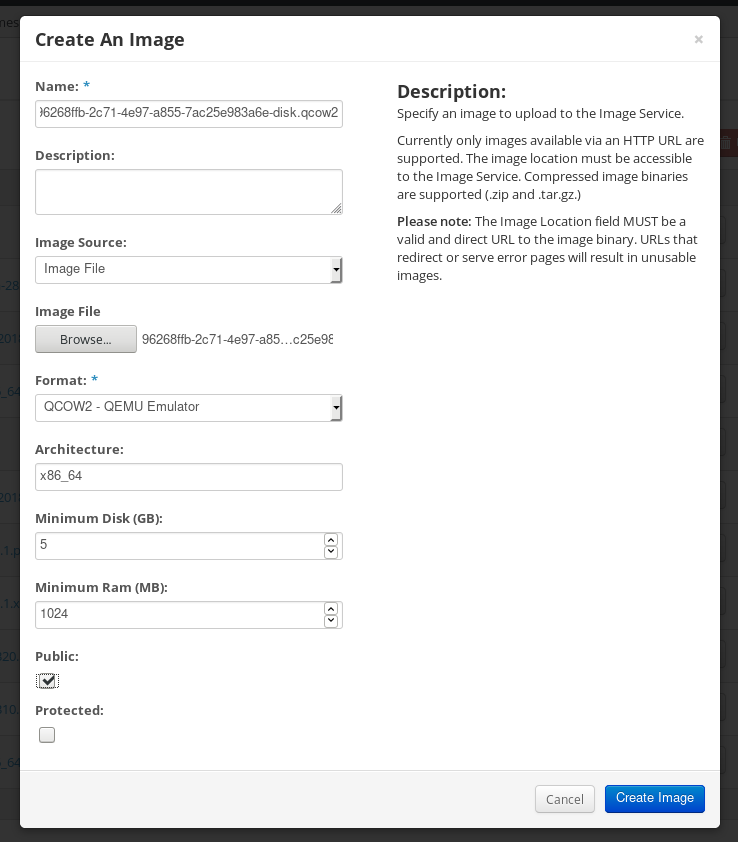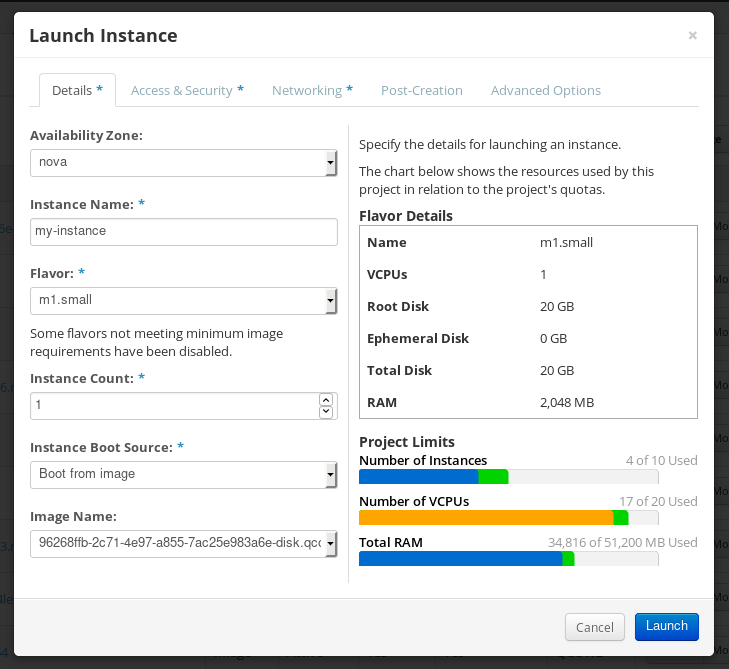Pushing composed images to OpenStack
Weldr aka. Composer can generate images suitable for uploading to OpenStack cloud deployments, and starting instances there. The images have the right layout, and include cloud-init.
Prerequisites
We’ll use Fedora 29 as our OS of choice for running this. Run this in its own VM with at least 8 gigabytes of memory and 40 gigabytes of disk space. Lorax makes some changes to the operating system its running on.
First install Composer:
$ sudo yum install lorax-composer cockpit-composer cockpit composer-cli
Next make sure to turn off SELinux on the system. Lorax doesn’t yet work properly with SELinux running, as it installs an entire OS image in an alternate directory:
$ sudo setenforce 0
$ sudo sed -i 's/^SELINUX=.*/SELINUX=permissive/' /etc/selinux/config
Now enable and start lorax-composer system service:
$ sudo systemctl enable --now lorax-composer.socket
If you’re going to use Cockpit UI to drive Composer (see below), you can also enable it like this:
$ sudo systemctl enable --now cockpit.socket
$ sudo firewall-cmd --add-service=cockpit && firewall-cmd --add-service=cockpit --permanent
Compose an image from the UI
To compose an image in Composer, log into the Cockpit Web Console with your web browser.
It’s running on port 9090 on the VM that you’re running Composer in. Use any admin
or root Linux system credentials to log in. Select the Image Builder tab.

We first have to have a blueprint defined. This blueprint describes what goes into the image.
For the purposes of this example we’ll use the example-http-server blueprint, which
builds an image that contains a basic HTTP server.
Click on the Create Image button and choose OpenStack QCOW2 Image from the dropdown to choose the Image Type:

If you click on the blueprint, you should see progress described on the Images tab:

Once it’s done, download the image:

Compose an image from the CLI
To compose an image in Composer from the command line, we first have to have a blueprint
defined. This blueprint describes what goes into the image. For the purposes of this
example we’ll use the example-http-server blueprint, which builds an image that
contains a basic HTTP server.
We run the following command to start a compose. Notice that we pass the image type
of openstack which indicates we want an image appropriate for pushing to
OpenStack.
$ sudo composer-cli compose start example-http-server openstack
Compose 96268ffb-2c71-4e97-a855-7ac25e983a6e added to the queue
Now check the status of the compose like this:
$ sudo composer-cli compose status
96268ffb-2c71-4e97-a855-7ac25e983a6e RUNNING Mon Oct 8 08:11:33 2018 example-http-server 0.0.1 openstack
In order to diagnose a failure or look for more detailed progress, see:
$ sudo journalctl -fu lorax-composer
...
When it’s done you can download the resulting image into the current directory:
$ sudo composer-cli compose image 96268ffb-2c71-4e97-a855-7ac25e983a6e
96268ffb-2c71-4e97-a855-7ac25e983a6e-disk.qcow2: 4460.00 MB
Pushing and using the Image
The created QCOW2 image can now be uploaded to OpenStack and used to start an instance. Use the Images interface to do this:

You can now start an instance with that image:

Now you can run an instance using whatever mechanism you like (CLI or AWS Console)
from the snapshot. Use your private key via SSH to access the resulting EC2
instance as usual. The user to log in as is cloud-user